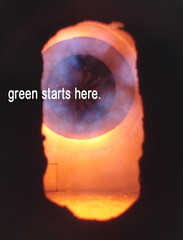
As the sun was rising in the west, 88,000 blog posts focused on Earth Day were added to more than 2 million written this week. Almost 10 percent of them were written by bloggers at BloggersUnite.org. At 6 a.m., it was still early when I looked.
Earth Day By Individuals
Rebecca Leaman, writing for Wild Apricot, highlighted organizations that use Wild Apricot Web sites to help carry out earth-friendly missions to help establish a sustainable future.
Mary Ann Strain, C.P., who represents the "Passionists" at the United Nations in New York City, wrote about Chandrika Tiwari in Nepal and how climate change is impacting women, who she says make up 70 percent of the world’s poor. Even in the United States there is a discrepancy, she writes, 13.8 percent of women are poor compared to 11.1 percent of men.
"irtiza104," who is a student in Bangladesh, used his post on LIFE As I Know It to explore the meaning of Earth Day after admitting that he was "having a lot of trouble fully understanding the meaning of the Earth Day." He then goes on to list seven steps that could help the earth, ranging from curbing our reliance on plastic bags to planting more trees.
Doson, a BlogCatalog regular, chose to write an original poem called "The Blue Marble" on his blog, Inside Doson. "Time Thief," writing a few days ago to help promote the event, provided eco-friendly tips (such as riding an Optibike) on This Time - This Space. And Samantha, an artist who maintains Samantha's Art Studio, promoted reusable bags that can be purchased on Etsy.
Their voices will join millions more who are writing, blogging, and attending events in honor of Earth Day, which marks the beginning of The Green Generation Campaign, a two-year campaign that focuses on the 40th Anniversary of Earth Day in 2010. Some events are small. And others, are much larger.
Anti-Earth Day By Individuals
Of course, not everyone shares the same ideas about Earth Day. Alan Caruba, writing for the Canadian Free Press says "much of the foundation of the environmental movement is pure lies, mind boggling distortions of questionable 'science', and a thin veneer for the entire purpose of environmentalism, the imposing of a one-world agenda for the enrichment of a few who dream of a monopolistic control of the world’s resources and its human work force."
He's not alone. There are plenty of people who will write about that today. Or, perhaps, remind us how people haven't done enough in what is often billed as politics masquerading as planet friendliness.
Politics Or Promise?
Maybe it's because I grew up watching the acclaimed Keep America Beautiful PSA crying Indian commercial that launched on Earth Day in 1971 (The PSA won two Clio awards and the campaign was named one of the top 100 advertising campaigns of the 20th Century by Ad Age Magazine), but I like Earth Day.
Sure, I understand the politics and commercialization of it all. It's simple. People will be around to save the planet or they won't be.
At the end of the day, when you deduct all the fuss from the extreme, the net result is that Earth Day helps people pause for a minute or two and think about how we might do this or that a little better. Ergo, Iron Eyes Cody convinced me to promise to never litter again. It's a little thing. But a whole lot of little things add up to something big. There is nothing wrong with that.
"If you change the way you look at things, the things you look at change.” — Wayne Dyer


















